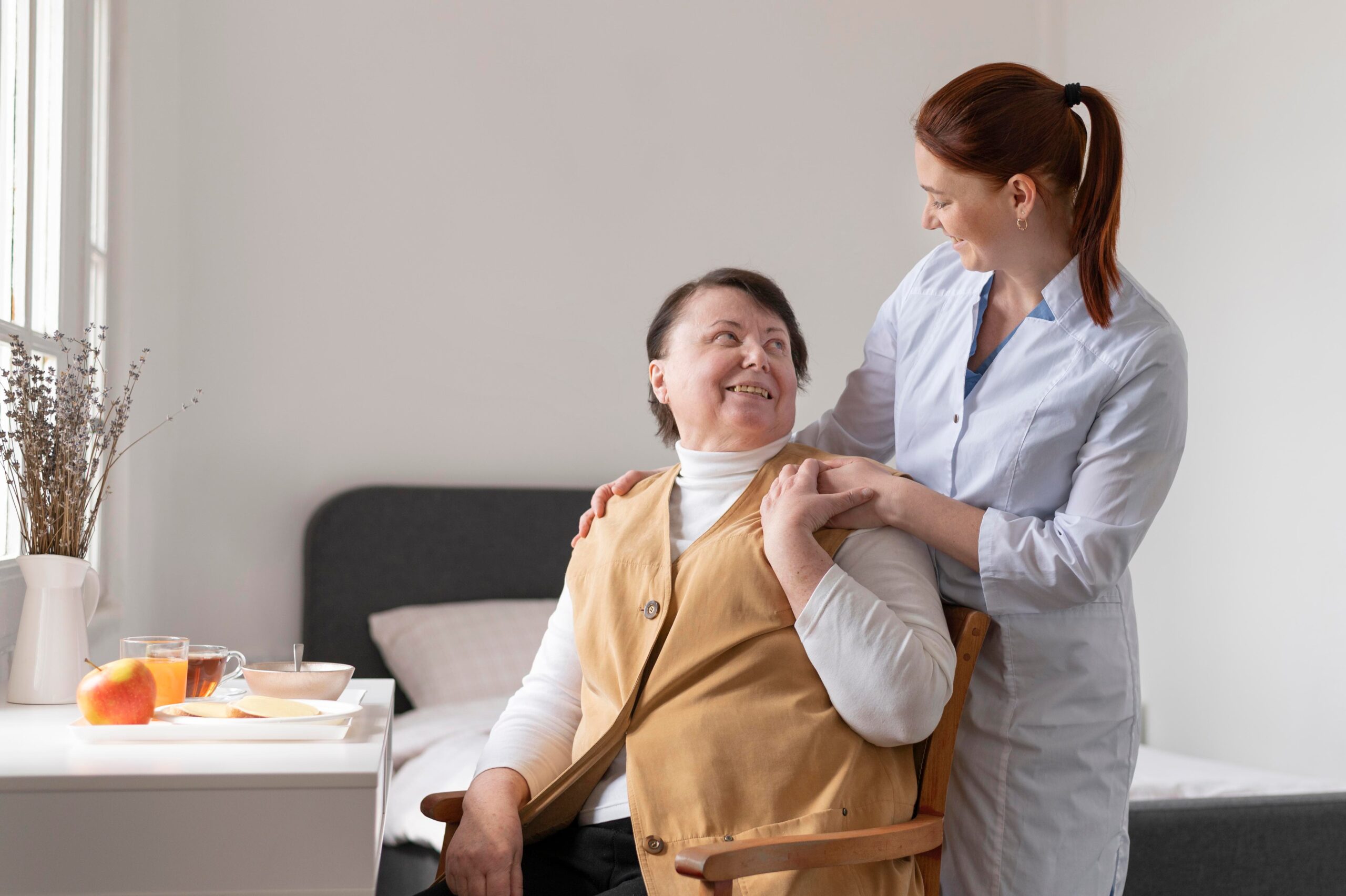Key Points:
- In-home therapy plays a direct role in reducing hospital visits by supporting seniors’ physical recovery, medication management, and chronic care.
- Services like nurse visits and wound monitoring address potential health issues early, before they escalate into emergencies.
- Consistent therapy at home encourages better mobility, adherence to care plans, and independence for aging adults.
As our loved ones age, the risk of hospitalization increases, whether due to falls, chronic illness complications, or missed medications. Hospital stays are disruptive, expensive, and can take a toll on an older adult’s physical and emotional well-being. For families and caregivers, the stress of repeated hospital admissions can be overwhelming.
This is where in-home therapy steps in as a powerful tool not just for recovery, but for hospital prevention. By bringing medical and therapeutic care directly into the senior’s home, families can significantly reduce the need for emergency room visits or extended stays. This article explores how in-home therapy works and why it’s such an effective option for keeping aging adults healthy and at home.
 The Role of In-Home Therapy in Preventing Hospitalizations
The Role of In-Home Therapy in Preventing Hospitalizations
In-home therapy refers to professional medical and therapeutic services provided to individuals within their residence. These can include physical therapy, occupational therapy, speech therapy, and nursing support, all tailored to the senior’s condition and needs.
Unlike clinical settings, therapy at home allows healthcare providers to assess a patient’s real-life challenges: mobility within their own space, ability to perform daily tasks, medication routines, and even emotional or social isolation. Addressing these issues early often prevents them from turning into emergencies.
Physical Therapy at Home Reduces Fall Risks
Falls are one of the top causes of hospitalization in older adults. Many falls happen not because of one wrong step, but because of a gradual loss of strength, balance, and coordination.
In-home physical therapy helps seniors regain or maintain their mobility in familiar surroundings. A licensed physical therapist will assess home-specific hazards (like loose rugs or stairs), and develop personalized exercises to improve balance and strength.
By working with seniors in their actual environment, physical therapists can make practical modifications and give real-world advice. This tailored approach is far more effective than generic exercise plans, and much more convenient than outpatient visits.
Nurse Visits Catch Problems Before They Become Crises
Many hospitalizations among seniors are due to untreated or poorly managed health issues – think infections, unmanaged diabetes, or medication missteps. In-home nurse visits serve as a proactive solution.
Registered nurses can perform regular check-ups, administer medications, monitor vital signs, and assess overall well-being. More importantly, they’re trained to notice subtle signs of trouble before they escalate.
For instance, a nurse might catch early signs of dehydration, infection, or elevated blood sugar – any of which could lead to hospitalization if left unaddressed.
Medication Adherence Is Easier With Professional Oversight
Missed doses, incorrect timing, or confusion about prescriptions are common reasons older adults end up in the ER. In fact, medication non-adherence is one of the leading causes of avoidable hospital visits among seniors.
In-home therapy providers often include medication management as part of the care plan. Nurses or caregivers can assist with sorting pills, setting up reminders, or even administering medications during visits.
With professional help, seniors are more likely to stay consistent with their prescribed regimens, reducing the risk of serious complications.
Wound Monitoring Helps Prevent Infections and Rehospitalization
For seniors recovering from surgery or managing chronic conditions like diabetes, wound monitoring is critical. An unhealed wound or unnoticed infection can quickly lead to hospitalization if not treated promptly.
Home-based nurses and therapists are trained to clean, dress, and monitor wounds regularly. They also educate families and caregivers on what to watch for between visits. This level of consistent monitoring greatly reduces the chance of complications or emergency care.
 Chronic Disease Management at Home
Chronic Disease Management at Home
Conditions like heart failure, COPD, and arthritis require ongoing attention and support. In-home therapy teams can work with physicians to implement chronic care plans that focus on prevention rather than just reaction.
By helping seniors manage symptoms daily, whether through breathing exercises, mobility training, or medication support, home health providers help reduce flare-ups that often lead to hospitalization.
This approach also provides families with a sense of security, knowing there’s a structure in place to manage their loved one’s long-term health.
Emotional and Mental Health Support
Hospital visits don’t only stem from physical decline; depression, anxiety, and social isolation can worsen chronic illnesses and contribute to physical symptoms.
In-home therapy isn’t limited to physical rehab. Social workers and mental health professionals may be part of the care team, especially when emotional well-being plays a role in the person’s overall health.
Simple routines, regular human connection, and personalized therapy can do a lot to keep a senior mentally sharp and emotionally resilient, both of which play a role in hospital prevention.
Convenience and Comfort Foster Better Outcomes
Receiving therapy in the comfort of home often leads to better engagement and consistency. Seniors don’t have to worry about transportation, unfamiliar settings, or long wait times.
This comfort results in more frequent and personalized care, which means potential health issues are addressed faster. The consistency helps families feel confident that their loved ones are being looked after thoroughly, without the trauma of repeated hospitalizations.
Family Involvement and Education
When therapy happens at home, family members and caregivers are naturally more involved. They get to witness the sessions, ask questions, and learn how to support their loved one’s recovery and health maintenance.
This education is key. A well-informed caregiver can spot early warning signs, understand medication schedules, and help create a safer living environment, all of which contribute to avoiding hospital trips.
A Smarter, Safer Way to Age in Place
Aging in place is a goal for many families, but it requires the right support system. In-home therapy provides just that – a holistic, personalized, and proactive approach to health.
It’s not just about recovering from illness or injury. It’s about keeping older adults safe, engaged, and out of the hospital in the first place.
If you’re seeking a smarter, safer way for your loved one to receive care without the stress of hospitals or clinics, Revival Home Health Care offers comprehensive in-home therapy in New York.
Our services at Revival Home Health Care include physical therapy, skilled nurse visits, medication support, and wound monitoring, tailored to each individual’s needs and provided right at home.
Whether your goal is to help your parent recover from surgery, manage a chronic illness, or simply stay strong and independent, we’re here to help. Contact us today to explore how our personalized in-home services can help prevent unnecessary hospital visits and improve quality of life.


 75 Vanderbilt Ave Staten Island, NY 10304
75 Vanderbilt Ave Staten Island, NY 10304 info@revivalhhc.org
info@revivalhhc.org 718.629.1000
718.629.1000